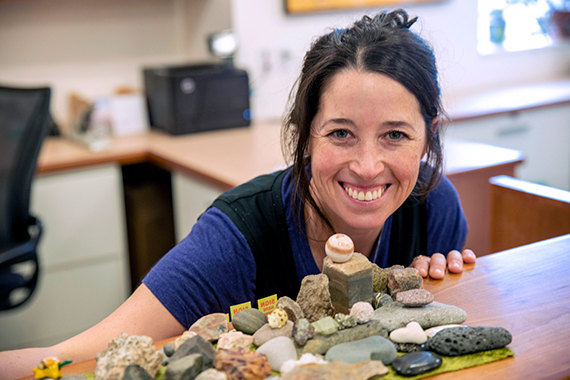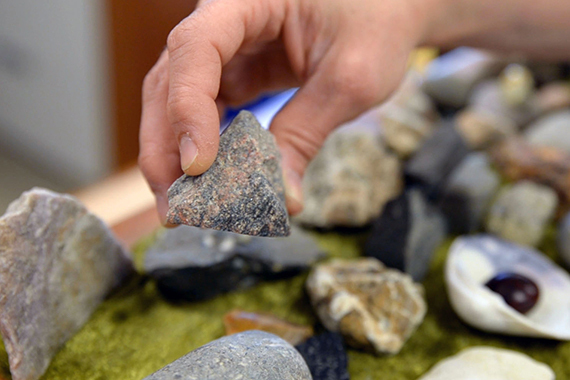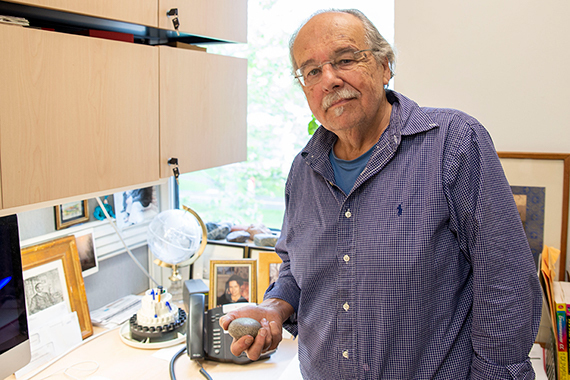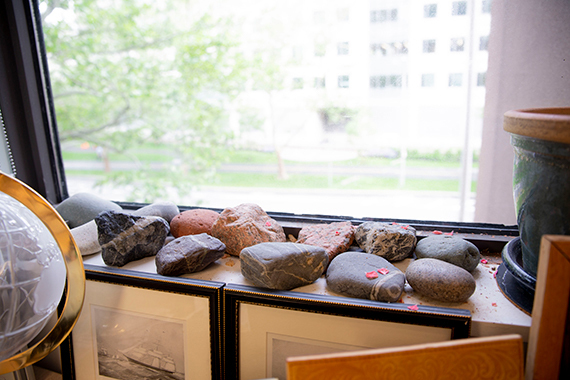The Stories That Rocks Can Tell

Image: Conor Gearin/Whitehead Institute
This story is part of our ongoing series, Beyond the Lab Bench. Click here to see all stories in this collection.
Whitehead Institute is known primarily for biology — but there’s a little geology going on behind the scenes, too. Laura Resteghini, administrative lab manager for the Bartel and Li labs, began collecting rocks in 2001 after hiking with a good friend in El Paso, Texas. She brought back three rocks and displayed them on her desk.
Once people saw the nascent collection, they began contributing enthusiastically, hunting down interesting rocks for Resteghini far and wide. As the display grew, with the rocks resting on a fabric moss blanket, it became a way to connect with people as well as an outlet for amateur geology. “It’s a starting point to talk about where people have been around the world,” Resteghini says.
When someone visits and asks about the rocks, Resteghini can tell stories about almost every specimen. “This one is from the Appalachian trail,” she says, picking up a tan stone with large red spots. “One of our Bartel lab technicians who was here for a long time hiked the whole trail, so a bunch of us from the lab went out to hike with her for a 12-mile section one day.”
Resteghini remembers who brought each rock and its region of origin, which is often far from Cambridge. She has cave rocks from India; granite from Scotland; a volcanic rock from Jeju Island in South Korea; a small stone from Cambridge, UK; and four crystals from Bryce Canyon in Utah.

Image: Conor Gearin/Whitehead Institute

Image: Conor Gearin/Whitehead Institute
“They’re all from the ocean,” he says. “They’ve all been sculpted by water in some way or another.” By looking at the varying hues and the different forms created by erosion, Richardson’s collection shows off how diversity can exist even at a small scale.

Image: Conor Gearin/Whitehead Institute
Richardson’s rocks once were on display outside the library. They now mostly reside in his office, catching the light on the windowsill over Galileo Galilei Way. As with Resteghini, Richardson says his collection has been the starting point for conversations.
“You get to know scientists personally here, in contrast to working in a big university library,” he says. It was easier when researchers would visit the library to look at print copies of journals, he says, but the small size of the institute still makes it feel tightly knit.
Contact
Communications and Public Affairs
Phone: 617-452-4630
Email: newsroom@wi.mit.edu


